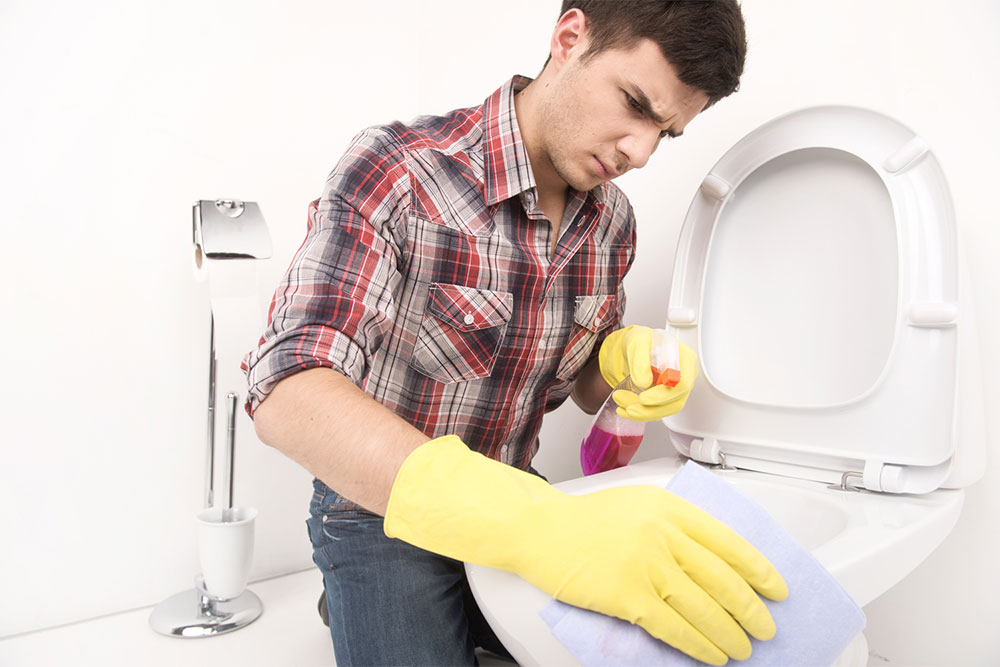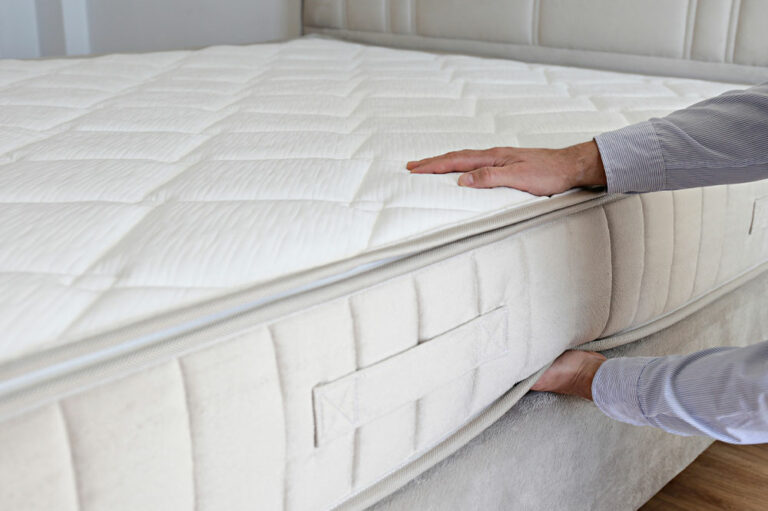Maintaining a clean and hygienic bathroom is a top priority for every household. And it should be since hygiene and tidiness go hand in hand. Nevertheless, despite the best intentions, people often unintentionally make common bathroom cleaning mistakes, inadvertently impeding their efforts and potentially giving rise to hygiene-related concerns. To help one avoid that, here are some common bathroom cleaning errors that should be sidestepped. These will help in ensuring a sparkling bathroom with a healthy environment.
Neglecting regular cleaning
One of the most common bathroom cleaning mistakes is neglecting regular cleaning. Waiting too long between cleanings accumulates soap scum, grime, and mold, making the cleaning process more daunting. It is better to establish a regular cleaning schedule and clean the bathroom at least once a week to maintain a consistently clean bathroom.
Forgetting to dust first
Many people dive right into cleaning bathroom surfaces without dusting first. Dust and loose debris can settle on surfaces, making it harder to achieve a spotless result. It is advisable to always start the bathroom cleaning routine by dusting surfaces from top to bottom. Using a microfiber cloth or a duster to capture dust and cobwebs ensures that subsequent cleaning efforts are more effective and leave the bathroom spotless.
Using harsh chemical cleaners
While it’s tempting to reach for heavy-duty cleaners, using harsh chemicals can damage surfaces, harm the environment, and pose health risks. Opting for milder, eco-friendly cleaners that are equally effective without the harsh side effects is better.
Overlooking tile and grout
Tiles and grout are often overlooked when it comes to cleaning, but they are prone to accumulating dirt, bacteria, and mold over time. Neglecting to clean them regularly can lead to unsightly stains and an unhealthy environment. To effectively clean and maintain tiles and grout, it is recommended to use a mixture of baking soda and water as a natural and affordable cleaning solution.
Using a dirty toilet brush
It is common to overlook cleaning the toilet brush after cleaning the toilet. Therefore, it is advisable to rinse the brush thoroughly after use and let it air dry. Additionally, it is important to periodically disinfect the brush by soaking it in a mixture of bleach and water.
Not disinfecting high-touch surfaces
Overlooking high-touch surfaces like faucets, light switches, and doorknobs can lead to the spread of germs. It is also important to regularly disinfect these surfaces with an antibacterial cleaner or disinfectant wipes.
Neglecting shower curtains and liners
Shower curtains and liners can accumulate soap scum and mildew, leading to unsightly stains and odors. So, one should wash and scrub shower curtains and liners regularly or replace them when they show signs of wear.
Using dirty cleaning tools
Cleaning tools like sponges and scrub brushes can harbor bacteria and grime if not cleaned properly. Rinsing and sanitizing cleaning tools after each use and replacing them regularly ensures effective cleaning.
Not cleaning the showerhead
Mineral deposits and mildew can accumulate in the showerhead, leading to reduced water flow and mold growth. To clean it properly, one must remove the showerhead and soak it in vinegar to dissolve mineral deposits, then scrub it clean and reattach it.
Leaving hair in the drain
Hair clogs in the bathroom are a common issue that can result in slow drainage and unpleasant odors. Regularly using a drain cover to catch hair and cleaning any hair buildup can prevent clogs.
Not cleaning toothbrush holders
Toothbrush holders can collect water, toothpaste residue, and bacteria. So, one must regularly wash toothbrush holders in hot, soapy water or run them through the dishwasher to clean them thoroughly.
Skipping the baseboards
Baseboards can accumulate dust and dirt over time, detracting from the overall cleanliness of the bathroom. Wiping down baseboards regularly as part of the cleaning routine maintains a polished look.
Not emptying the trash can regularly
Overlooking the bathroom trash can will result in unpleasant odors and bacteria buildup. One must empty and clean the trash can regularly. Also, one can consider using liners to make cleaning easier.
Forgetting the toilet tank
Cleaning the toilet bowl is a regular chore, but often, we forget about the toilet tank. The tank can collect mineral deposits and mildew, so it’s essential to remove the lid and clean it properly. Also, one should check for any issues with the flushing mechanism while one is at it.
Using excessive water
When cleaning, using too much water can lead to excess moisture, which promotes mold growth. Instead, use a damp cloth and dry surfaces thoroughly after cleaning to prevent moisture buildup.
Rushing through cleaning
Rushing through cleaning can lead to missed areas and ineffective results. Instead, it’s important to take time and clean methodically, ensuring all surfaces and corners of the bathroom are addressed.
Using abrasive scrubbing pads
When cleaning surfaces, it’s important to avoid using abrasive scrubbing pads as they can damage finishes and leave scratches. Instead, use non-abrasive scrubbing pads or brushes to safely remove stains and grime.
Mixing cleaning products
Mixing different cleaning products, especially those containing bleach, can create toxic fumes. So, it is important to use one cleaning product at a time and follow label instructions carefully. Also, one should never mix bleach with ammonia or other cleaning agents.
Storing cleaning products incorrectly
Leaving cleaning products exposed to extreme temperatures or sunlight can reduce their effectiveness. Storing cleaning products in a cool, dry place, away from direct sunlight, and checking expiration dates to ensure they are still effective is essential.
Ignoring ventilation
Not ventilating the bathroom properly during and after showers can lead to excessive moisture, which encourages mold and mildew growth. So, one must turn on the bathroom fan during showers and leave it on for a while afterward. One can also open windows to improve air circulation.
Incorporating these tips into the bathroom cleaning routine will help avoid common mistakes and maintain a sparkling, hygienic space. A clean bathroom looks inviting and promotes a healthier environment for the family. By adopting these practices, one can ensure that their bathroom remains clean and fresh.



